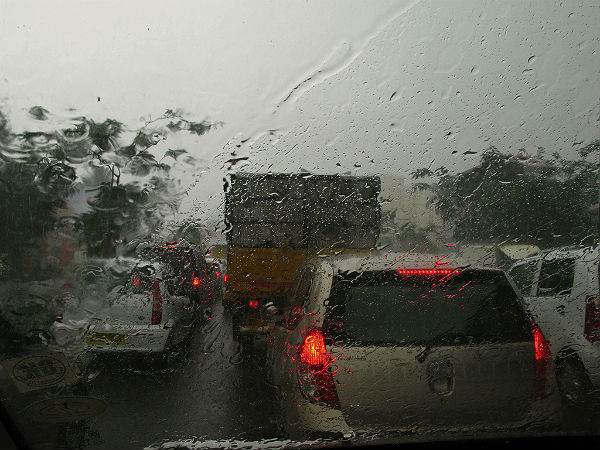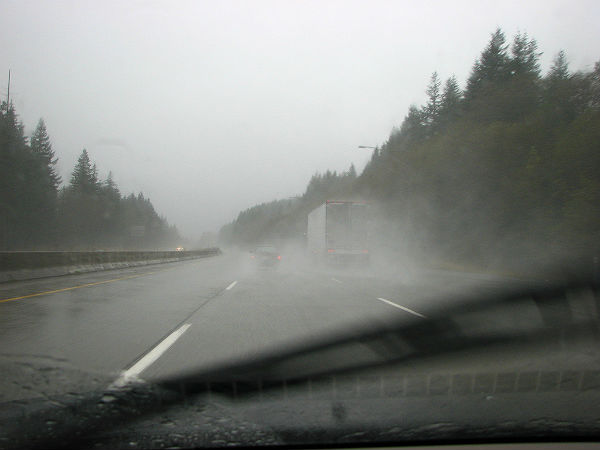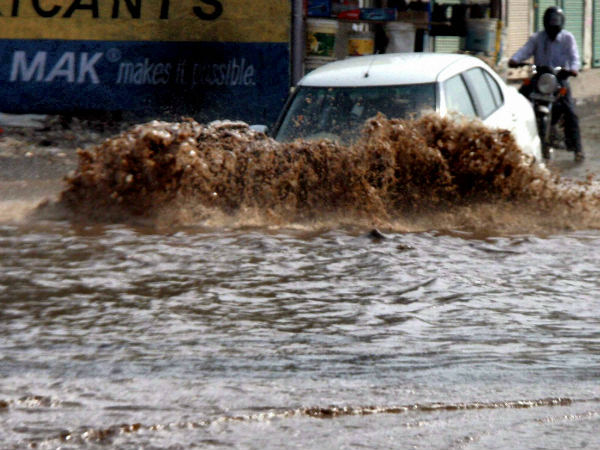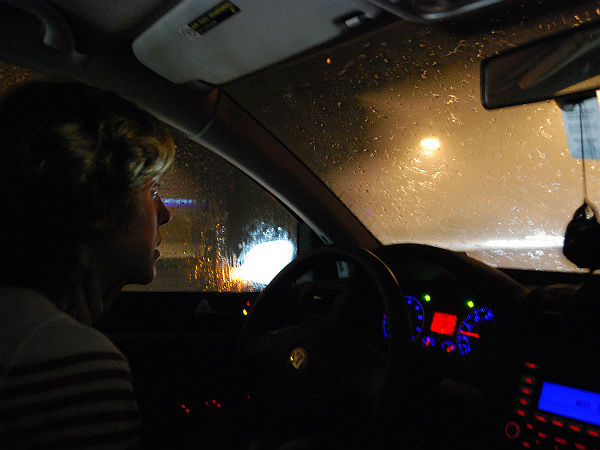Latest News
-
 Honda Amaze Scores 2-Star Safety Rating At Global NCAP Crash Tests – Next-Gen Model To Arrive In 2025
Honda Amaze Scores 2-Star Safety Rating At Global NCAP Crash Tests – Next-Gen Model To Arrive In 2025 -
 Hero Lectro Introduces Muv-e Electric Bike To Transform Delivery Services
Hero Lectro Introduces Muv-e Electric Bike To Transform Delivery Services -
 Chrysler Pacifica Marks Seven Years As Most Awarded Minivan With New Campaign
Chrysler Pacifica Marks Seven Years As Most Awarded Minivan With New Campaign -
 Nissan Magnite Achieves 1 Lakh Unit Sales Milestone: Consistency Helps
Nissan Magnite Achieves 1 Lakh Unit Sales Milestone: Consistency Helps -
 Log9 Unveils Amphion & Nexmile – Revolutionizing EV Asset Management
Log9 Unveils Amphion & Nexmile – Revolutionizing EV Asset Management -
 2025 Cayenne GTS Unveiled: V8 Power And Advanced Dynamics In New Porsche Models
2025 Cayenne GTS Unveiled: V8 Power And Advanced Dynamics In New Porsche Models -
 Vanessa Williams Moderates Panel To Support Parkinson’s Awareness With Drive Toward A Cure
Vanessa Williams Moderates Panel To Support Parkinson’s Awareness With Drive Toward A Cure -
 India's Car Exports Surge In 2023-24: Maruti Suzuki Leads The Way
India's Car Exports Surge In 2023-24: Maruti Suzuki Leads The Way -
 2024 Isuzu D-Max V-Cross Facelift: What To Expect From The Latest Updates
2024 Isuzu D-Max V-Cross Facelift: What To Expect From The Latest Updates -
 Suzuki Access Electric To Electrify The Indian Scooter Market By 2024
Suzuki Access Electric To Electrify The Indian Scooter Market By 2024
Monsoon Driving Tips - Stay Safe During The Rains
Raindrops are falling on our heads, and that means that we need to be prepared. Not just by keeping umbrellas handy in the car, because the monsoon dictates important changes to driving style to remain safe on the wet road.
Also Read: Safe Driving Tips For The Ghats - Things To Keep In Mind!
We are going to take you through some important aspects of road safety during this potentially dangerous time, and hope that you adapt your driving to create a safety buffer for you and your loved ones.
The story continues in the next section. Click through the slides for more:

The story continues on the next slide.
Picture credit: Ohhector via Flickr

1. Slow down!
It takes longer to safely slow down and steer in wet weather, since your inputs have to be much smoother. Be extremely gentle with the brakes giving it smooth inputs, release the clutch slowly between gears and don't be aggressive with the accelerator. Also, maintain a greater distance with the vehicle in front of you.
Picture credit: Rejik via Flickr

2. Check your tyres
Your tyres are the only contact the car has with the road, so they need to be in good shape. Try the standard one-rupee coin test to see how deep the tread is. If it's lower than 1.6 mm, you should replace the tyre.

3. Check your tyres (contd.)
Good tyres become all the more important during the monsoon because the tyre needs to dispel water out of its grooves constantly to maintain grip with the road. If the tread is worn, there is no place for the water to leave out of the tyre, and the car ends up riding on a layer of water very easily, which leads to loss of traction. This is called aquaplaning, which can result in a fatal accident.

4. Check your wipers
If your wipers are not in good condition, you will not be able to see out of your windscreen. It's as simple as that. And since we obviously need the best vision we can get, especially during a spell of heavy rain, it should be high up on your checklist.
Picture credit: Nadircruise via Flickr

5. Check your wipers (contd.)
Have the wiper blades replaced at least once a year, and try to have them in excellent working condition for the rains. The entire wiper arm may need replacing on older cars, since they tend to warp over time, and become unable to exert enough downward pressure on the windscreen to clean it.
Picture credit: Shereen84 via Flickr

6. Use headlights in rainy conditions
When visibility is poor because of rain, turn on your headlights (on low beam) as this will help other drivers know you're there. Also make sure that you headlights are in good working order - old, yellowed lens reflectors need to be replaced before the monsoon, especially since wet roads tend to absorb much more light than dry tarmac, thus rendering your headlights less effective.
Picture credit: Cobalt123 via Flickr

7. Pull over when the rain becomes too heavy
Wiper blades can get overloaded during extremely heavy rain, and not be able to function as normal, resulting in a layer of water on the windscreen that becomes very hard to see through. This is when you need to pull over to let the shower pass or at least lighten till visibility reaches a safe level. Make sure you move off the highway or road with your hazard lights on to a safe place where your car isn't in the path of traffic, or you become a prime candidate for a bad accident.
Picture credit: SEATCordoba via Wiki Commons

8. What to do if your car skids
Prevention is certainly better than cure, so we stress again to slow down! Try to brake before entering turns, and not mid-corner, and be gentle with the throttle. However, if you do feel your car skidding, remain calm and try "steering into the skid". What this means is you should look and steer in the direction you want the car to go. If your car doesn't have ABS, don't brake as this will only heighten the loss of control, but if the car is ABS-equipped, brake firmly while steering into the skid.
Picture credit: Xavier33300 via Flickr

9. On the highway
While the three-second rule applies for distance between vehicles on the highway in the dry, it needs to be increased when the roads are wet during the monsoon. This gives you more of a chance to slow down in case the vehicle in front suddenly hits the brakes. If you are in the habit of following cars closely, now is definitely the time to stop.

10. On the highway (contd.)
Also take extreme care when overtaking trucks and buses as they tend to lift up huge amounts of spray from the road which can result in temporary loss of vision. If possible, don't drive during the night, because our highways are already dangerous at that time with blinding headlights restricting vision even in the dry. Lights get exponentially multiplied with every drop on the windscreen so take extreme care if indeed, you have to be on the road.
Picture credit: Pleeker via Flickr

11. Deposits of oil on the road
Rain can mix with oil residue on the road to form a film on the road, which can be lethal, especially around a curve. Being gentle with your steering inputs, gear changes and acceleration comes into play again. Take care at intersections where oil tends to collect from trucks, buses and older vehicles, and remain alert especially just after it begins raining since this oily film would not have had the time to wash away.

12. Driving through water
Driving through a flooded area can be extremely dangerous for your car, since all its expensive electronic control systems are put at risk, especially newer cars. As rule, don't attempt to drive through water that is higher than the bottom of your doors, or you could end up like the guy in the picture. If however, you deem it safe to go through the water, slot the car into first gear, keep the clutch depressed just enough to partially engage gear, and drive slowly through the water. This is to keep the exhaust gases moving out of the tail pipe. If water gets sucked back in, it could enter the engine and render it useless, requiring you to replace it entirely.

13. Avoid all distractions
Both the stereo and the fellow passengers needs to kept at minimum volume, so exercise your right as a driver to make sure this happens. And don't answer your cell phone, even through the handsfree, if it's a heavy downpour and visibility and driving conditions are poor. You need to concentrate now, because yours and often other lives rest in your hands.
Picture credit: Juliarowe via Flickr

14. Make sure the air conditioner is working
In a rainy spell, the windows of the car tend to get fogged up if the defroster is not working. It works best combined with the AC, so make sure the air con is in good working condition or you'll have to use a cloth or towel to constantly wipe the windscreen and windows. Not recommended if you're driving, especially at highway speeds. If your car doesn't have an AC, halve a clean potato, rub it on the windows and leave to dry. This will help reduce condensation.

15. Try not to splash others
And last but not least, there is nothing worse than being stuck outdoors during a heavy downpour, so be sensitive to pedestrians and two-wheelers on the road. Anticipate where water can spray them and slow down!
Picture credit: Andym8y via Flickr



 Click it and Unblock the Notifications
Click it and Unblock the Notifications















